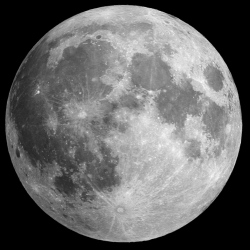
An international research team has found that there is an extremely soft layer deep inside the Moon and that heat is effectively generated in the layer by the gravity of the Earth. These results were derived by comparing the deformation of the Moon as precisely measured by Kaguya (SELENE, Selenological and Engineering Explorer) and other probes with theoretically calculated estimates.
These findings suggest that the interior of the Moon has not yet cooled and hardened, and also that it is still being warmed by the effect of the Earth on the Moon. This research provides a chance to reconsider how both the Earth and the Moon have been evolving since their births through mutual influence until now. When it comes to clarifying how a celestial body like a planet or a natural satellite is born and grows, it is necessary to know as precisely as possible its internal structure and thermal state.
How can we know the internal structure of a celestial body far away from us? We can get clues about its internal structure and state by thoroughly investigating how its shape changes due to external forces. The shape of a celestial body being changed by the gravitational force of another body is called tide. For example, the ocean tide on the Earth is one tidal phenomenon caused by the gravitational force between the Moon and the Sun, and the Earth. Sea water is so deformable that its displacement can be easily observed.
How much a celestial body can be deformed by tidal force, in this way, depends on its internal structure, and especially on the hardness of its interior. Conversely, it means that observing the degree of deformation enables us to learn about the interior, which is normally not directly visible to the naked eye.
